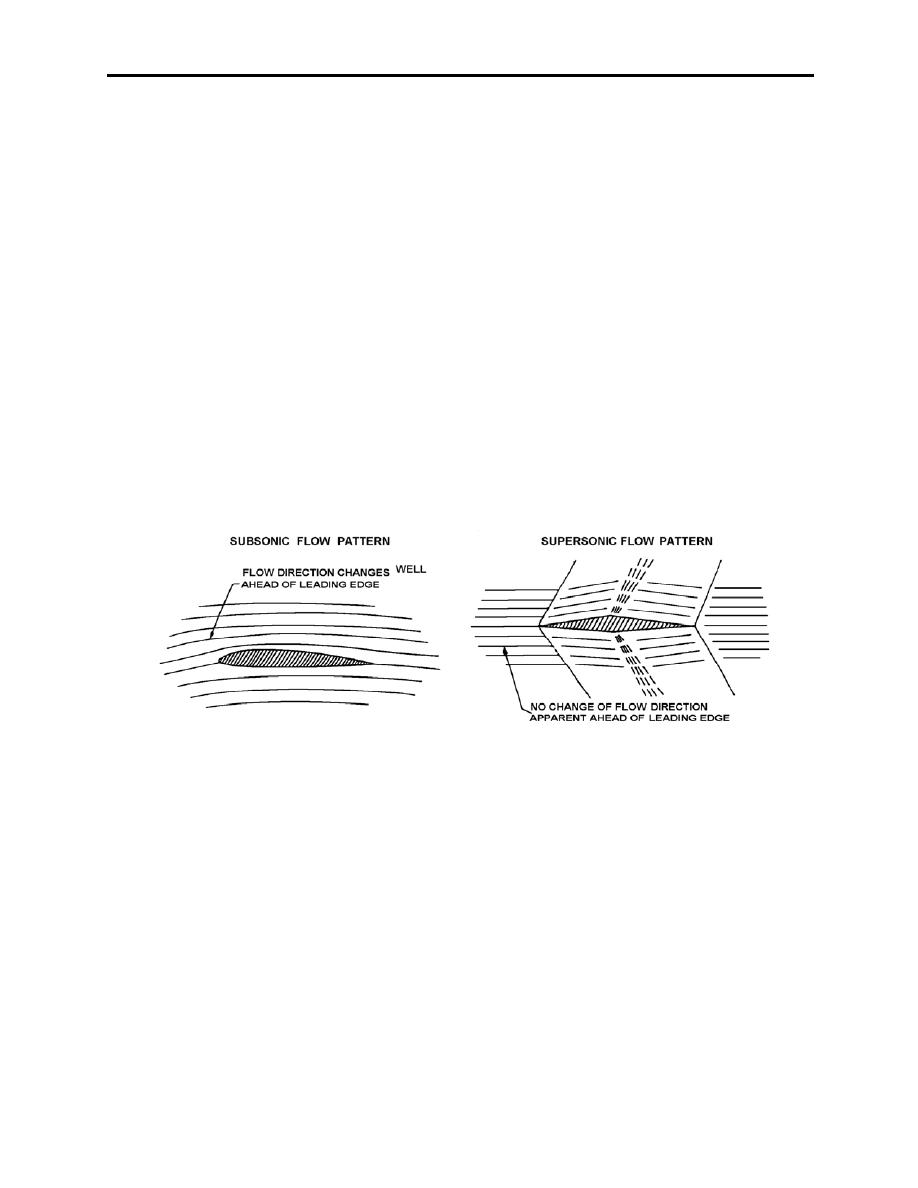 |
|||
|
|
|||
|
|
|||
| ||||||||||
|
|  CHAPTER 5
HELICOPTER AERODYNAMICS WORKBOOK
COMPRESSIBILITY EFFECT
Another factor, which limits forward speed in helicopters, is the compressibility effect on the
advancing blade. The airspeed the advancing blade "sees" increases as forward helicopter speed
increases. At low speeds, air compression is not a problem because the air experiences relatively
small changes in pressure with only negligible changes in density. At high speeds, the pressure
changes taking place are larger and result in significant air density changes.
The dominant factor in high speed airflow is the speed of sound. Speed of sound is found at
the point where pressure disturbances are no longer propagated through the air, and this
propagation speed is a function of air temperature. As altitude increases and temperature
decreases, the speed of sound decreases.
If the airflow is traveling at some speed above the speed of sound, the airflow ahead of it will
not be influenced by the pressure field, because pressure disturbances cannot be propagated
ahead of the airfoil. As the speed nears the speed of sound, a compression wave forms at the
leading edge of the blade and all changes in velocity and pressure take place sharply and
suddenly. The airflow ahead of the airfoil is not influenced until the air particles are suddenly
forced out of the way by the concentrated pressure wave formed by the airfoil. Typical
supersonic airflow is shown in figure 5-3.
Figure 5-3
The principal effects of compressibility on the advancing blade are: 1) a large increase in
blade drag and 2) rearward shift of the airfoil aerodynamic center. This increases power
required to maintain rotor rpm, vibrations, cyclic feedback, and an undesirable high twisting
moment on the blade.
Compressibility effects become more severe at higher lift coefficients (higher AOA) and
higher speeds. The following operating conditions represent the most adverse compressibility
conditions:
1. High airspeed
2. High rotor rpm
3. High gross weight
5-4 FLIGHT PHENOMENA
|
|
Privacy Statement - Press Release - Copyright Information. - Contact Us |